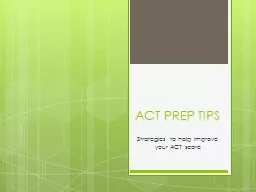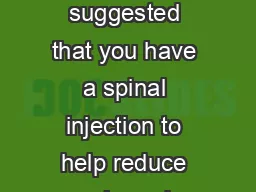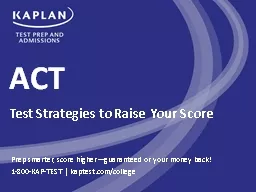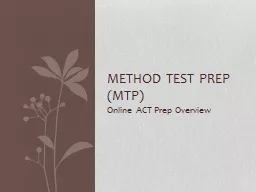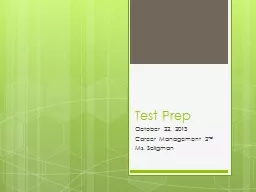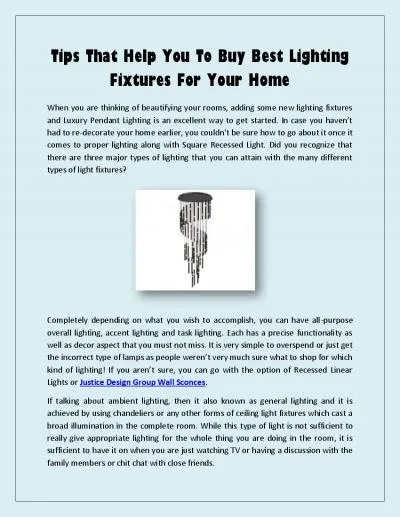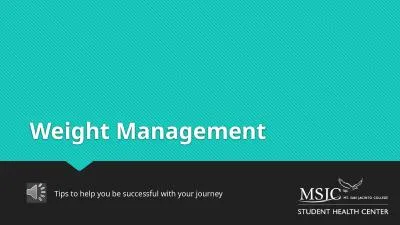PPT-ACT PREP TIPS Strategies to help improve your ACT
Author : pamella-moone | Published Date : 2019-06-20
score By Michelle Evans THE ACT TEST The test measures academic achievement It does NOT measure your intelligence or ability This means you can increase your score
Presentation Embed Code
Download Presentation
Download Presentation The PPT/PDF document "ACT PREP TIPS Strategies to help improve..." is the property of its rightful owner. Permission is granted to download and print the materials on this website for personal, non-commercial use only, and to display it on your personal computer provided you do not modify the materials and that you retain all copyright notices contained in the materials. By downloading content from our website, you accept the terms of this agreement.
ACT PREP TIPS Strategies to help improve your ACT: Transcript
Download Rules Of Document
"ACT PREP TIPS Strategies to help improve your ACT"The content belongs to its owner. You may download and print it for personal use, without modification, and keep all copyright notices. By downloading, you agree to these terms.
Related Documents

